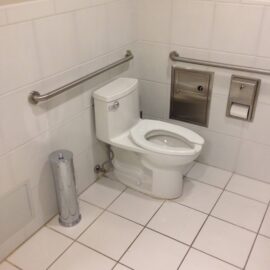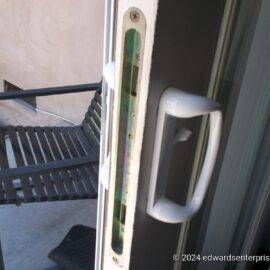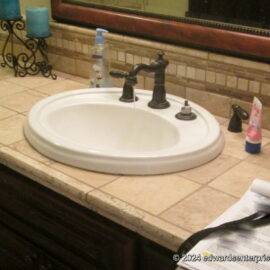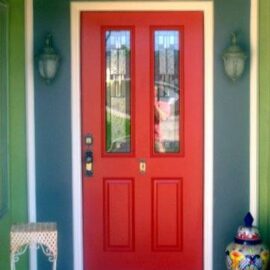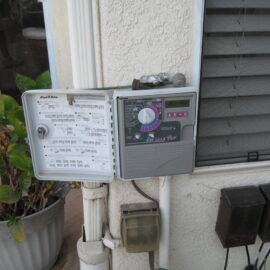Bechtel Group Inc.—San Francisco, CA
Fluor Corporation—Irvine, California
Chicago Bridge & Iron Company—The Woodlands, Texas
Jacobs Engineering Group Inc.—Houston, Texas
Kiewit Corporation—Omaha, Nebraska
Turner Construction—New York City, New York
Skanska Construction—New York City, New York
PCL Construction—Denver, Colorado
Whiting-Turner Contracting Company—Baltimore, Maryland
KBR (Kellogg, Brown, & Root) Inc.—Houston, Texas
We might not be as big as these heavy hitters building bridges, dams, stadiums and skyscrapers, but we use our size as an asset, bringing a personal touch to each handyman repair and remodel we undertake. Become a satisfied Edward’s Enterprises customer today!
What are some Handyman Skills that a typical homeowner (or renter) should know?
Some repairs around the home can be tackled by the average DIYer, but a little know how about the workings of your home, from the Electrical system to the Plumbing to the materials used to construct your dwelling (and the year they were installed) will help you maintain, enhance and protect your investment and it’s contents. Top 3 recommendations from us:
1. Know where the electrical shut off is, including all the breakers for the circuits of your home, and make sure they are labeled accurately. A short circuit or total power outage is not the time to figure out which breaker is the one for the toaster.
2. Know where the plumbing shutoff is, including for each fixture (faucet, sink, dishwasher, hot water heater) and for the entire home. Sometimes an addition, or the landscape sprinklers, will have a separate shutoff. Know where that is too (and label it while your at it). Do the shutoffs look corroded? Are shut off handles rusted shut? It might be time to hire a licensed contractor like Edward’s Enterprises Contractor & Handyman 😉 to replace them.
3. Know where the gas shut off is, including for any gas range, gas water heater, gas fireplace, or gas BBQ. You should also consider having an earthquake shut off installed, to prevent gas leaks, fires and explosions in case of a Southern California roller.
Don’t wait for an emergency situation to review the above, get started today! It’s great to know how to find a stud to anchor a bathroom shelving unit too, moneytalksnews.com offers a helpful list of handyman repairs that can be learned by the typical homeowner (practice, practice, practice!).
What can a handyman (in Southern California) do without being a licensed contractor?
A handyman in California without a Contractor’s license from the Contractors State License Board (CSLB) is limited to smaller $500 projects (that includes labor PLUS materials). This is one of the reasons to hire an insured, licensed contractor like Edward’s Enterprises for all of your Honey-Do-List handyman repairs. Angie’s List has an article on the differences between handyman and licensed contractors, and some of the differences in licensing from state to state.
When should I hire a Designer, Architect, or Remodel Contractor (and in what order?)?
There are some simple differences between the 3, and the order depends on the project:
1. A “simple” remodel of a bathroom, kitchen, etc. where you, the client, has a good idea of how they want the area of the home to look when they are done, doesn’t include any major structural changes, and is less than 5% of the home’s value can likely be handled by a remodel/general contractor, preferably one that does a lot of work in inhabited structures (as opposed to ground up work).
2. A more involved remodel of a home where the client is at the blank canvas stage (I’m looking for guidance, suggestions, etc.) and needs to match the vision in their head with the end result may be a project to involve a designer at the step before involving the remodel contractor. This will allow the designer to provide guidance based on needs, aesthetics, and possibilities which can be passed along to the contractor once approved. This will result in a more accurate estimate based on actual labor/materials to execute your (and your designers) vision.
3. A very involved remodel of a home, including redesigning the floor plan, major structural changes, major changes to the mechanical systems and more would be a project we would recommend working with an Architect first, or at least in parallel, with a designer. An architect can address the existing and proposed structure loads, stresses, and may point out ways to save money with minor adjustments to the designer’s plans. Then, once you have approved plans, a contractor can get to work transforming your dream home.
Expertise.com has a 7 step guide to hiring a remodeler, and covers some of this in step #1.
If Remodeling is too expensive, how do I stretch my dollar and still get the most out of my home improvement project?
Homes often come with a lot of character, and many are very unique. With that in mind, if you are a new owner (or have lived in your home for too many years) you might want to bring something fresh or new to your living space even when lots and lots of disposable income is not available. While any home improvement project will cost something, there are many small projects that you can get a lot from without breaking the bank. And if you are an adventurous DIYer, you can also get creative with materials costs by free-cycling and up-cycling building materials, getting creative with reuse of landfill bound materials, and look into trading with neighbors to find just what you need, from paint, to new plants for a garden, to a new (slightly used) front door! Some of the projects that can provide the most bang for your change include:
1. Deep clean and organize: Reevaluating your “stuff”, the space it takes up, what you really need, and where you can tuck it away neatly can expose more space in your home, bring in light, and inspire creativity.
2. Refinish old sinks, counters and tubs/showers. There are kits out there that are probably fine for a small sink that is stained from age, but this is one of the projects that may be best left to a professional if you are doing a whole counter, tub or shower. Refinishing (or re-glazing) can really freshen up a bathroom or kitchen, and may be available in a number of colors. The chemicals, tools, and know how is worth it to hire a professional instead of doing it yourself, and it is much cheaper than a full replacement.
3. A new “accent” backsplash can be an attractive eye catcher and conversation starter, and you can spend a little more on fancier tile as the square footage is less than a whole counter or floor typically. There are some inexpensive kits for this also.
4. Wallpaper accent walls can create artistic murals or textured and patterned backdrops for existing furniture or living spaces. Wallpaper, when done sparingly and tastefully, doesn’t have to be as expensive or overwhelming as doing a full remodel or upgrade.
The list of lower-cost home improvement upgrades at nealfunding.com has many other options, but a small change like a new paint color on your front door might be all the change you need right now. Well, maybe a new door knob while your at it?


